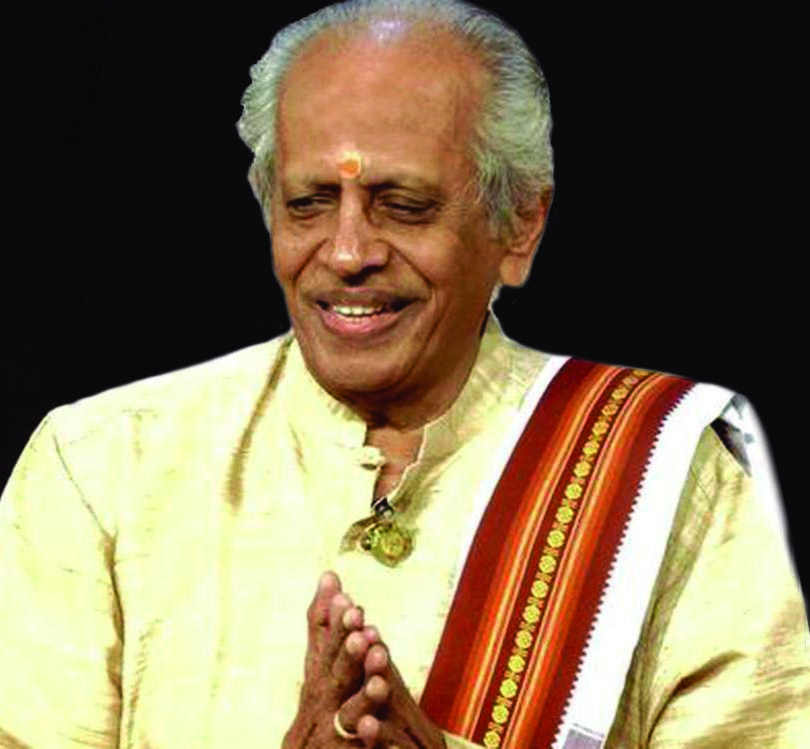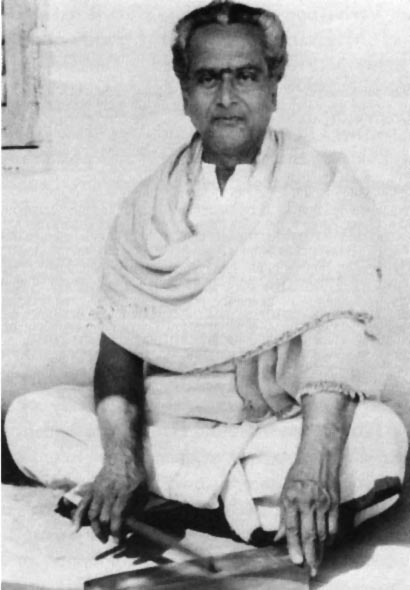“Susraavya…” is the word that comes to mind as raga Behag bursts forth from the flute of V. Vamshidhar. It is a concert to commemorate the memory of the great vaggeyakara Mysore Vasudevachar in the house he lived in on Sayyaji Road in Mysore. Aditi Krishnaprakash is playing the violin, V.S. Ramesh the morsing, and G.S. Ramanujam the mridangam. It is the summer of May, and Mysore is being blessed by a good cooling rain. May is the month that Mysore Vasudevachar was born and later left this earth (28 May 1865 to 17 May 1961). As Vamshidhar plays Vasudevachar’s Begada composition, I am reminded of Vamshidhar’s grand uncle, the veena vidwan Mysore Doraiswamy Iyengar’s words about Mysore Vasudevachar. The composer had explained the raga Begada to the vainika. Then singing a line from his own kriti Manasa vachasa sirasaanisham bhajata Devadevam, he asked, “What did you find interesting in this?” “Very nice,” said Doraiswamy. Vasudevachar went on to sing the anupallavi and charanam and explained the significance of the usage of swaras in the composition.
Kalakshetra Foundation celebrated the ‘satabhishekam’—80th birthday of their Professor Emeritus, A. Janardhanan, on 23 April 2022 at the Bharata Kalakshetra auditorium in Chennai. It was a glowing tribute to a man of great stature who has been the driving force of the institution, having been associated with it for an extraordinary 65 years and still counting. In an era of constant change and shifts of allegiance propelled by monetary or other considerations, this has indeed been a monumental innings by one person in one institution. The programme commenced with a brief introduction of the events to unfold, followed by a prayer song by students. A video was screened tracing Janardhanan’s journey at Kalakshetra—from his arrival at a tender age to his blossoming into a consummate artist, crossing various landmarks, his achievements, till his attaining the status that he has come to occupy in the minds and hearts of his students and contemporaries.
As the night crawls in, a mild mridangam sound rises from one of the walls of the Reserve Bank quarters. A sincere banker and an eager percussionist, Mannarkoil Balaji found a way for his passion and creativity within the confines of reality. Born in a family with no musical lineage, Mannarkoil Balaji today, is one of the most sought after mridangists. It was a journey built through the art of perseverance, love for knowledge, and a meaningful contribution in the sphere of mridangam. Born on 6 October 1965, Balaji’s first tryst with music began at the age of four, when he found a huge fascination towards discarded mud pots. Though the sound of the mud pot for the tender, promising hands was limited, his mother Bhuma Jagannathan identified his interest, which marked the beginning of his musical journey.
On 18 January 1992, V.S. Muthuswamy Pillai, the very creative ‘Bharatanatyam Master’, who mesmerised and electrified the Indian and international audiences with his dance compositions, passed away in a hospital in Chennai due to cancer, leaving his family members and his dance students in deep sadness. His demise was a great loss and a source of emptiness and distress for all of us, his disciples, as at once we lost not only a great artist, an excellent teacher and a remarkable dance and music composer, but also a caring artistic ‘father’. When last year, in 2021, one of his students Dominique Delorme, suggested to me to organise together a ceremony in his memory, I accepted his proposal with joy. At that time we were in full lock-down, due to the Covid 19 pandemic, and all the cultural and artistic activities were stopped in France and elsewhere. Consequently, it was very difficult for us to foresee what could be the situation at the date fixed for the homage to our Master, for his 30th death anniversary. The Paris commemoration ceremony started with a welcome speech by Marie Fourcade focusing on the importance of the Indian artistic system of learning, followed by my introductory lecture titled : ‘The dance in South India between tradition, transmission and innovation: the case of V.S. Muthuswamy Pillai (1921-1992)’. In this presentation I spoke about Master’s background and career. Belonging to a hereditary family of temple artists, during his life he underwent quite a number of personal dramatic experiences, some of which also mirrored the major events that took place in south India in those years. Born in the community of devadasi and nattuvanar, he was directly affected by the change of attitude towards those excellent performing artists before and after the approval of the Devadasi Act. The drastic change in the artistic landscape of south India, along with the stigma attached to those hereditary artists, left the majority of them without patronage and financial support, once provided by both the local religious and aristocratic authorities.
CONTENTS Vol.
29 Issue 7 July 2022
6 Sruti box
7 News & notes
16 Birthday calendar
18 Mysore Vasudevachar
26 Spotlight v A. Janardhanan – 80
30 Class act v Mannarkoil Balaji
36 Record rack
37 A peep into the past
v ‘Master’ V.S.
Muthuswamy Pillai
40 Tribute v K.G. Vijayakrishnan
42 From the Editor
Front
Cover: Mysore Vasudevachar
Photo courtesy : Kalakshetra Foundation





.jpg)
